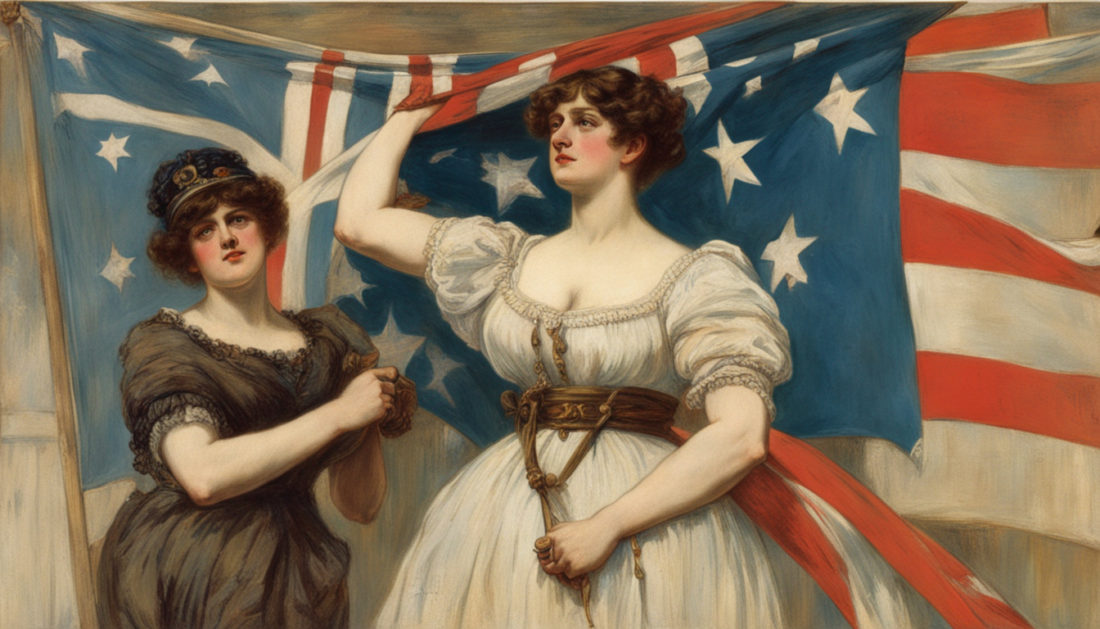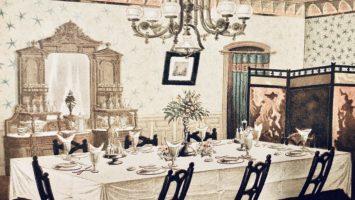This might a good time to discuss the difference between British and American etiquette. I hesitated to put the vs. in the title as this is not a better or worse discussion, just a comparison. British etiquette is obviously older and has its roots in European and Royal court etiquette while American etiquette has wider and more varied versions. I think when you read etiquette books from Britain, even if the works are for the middle class, there is always an aspirational tone that mimics the upper class. In America, you see this in some places, but you will also find new forms of etiquette influenced by both our formation as a puritan haven and as a place where many cultures and ethnic backgrounds brought their home customs to our shores and integrated them into “American” culture.
From our formation, you see the influence of Britain in America most strongly in certain areas of the South, while other Southern areas, (such as Louisiana) are more steeped in the ways of the French. New York has very strong roots in Dutch etiquette as well as British. By sheer numbers, Germans culturally dominated in turn of the century America. From the Amish in the East, to Midwest farmers, to Long Beach California, working class Germans left an indelible mark on the etiquette of America. From coffee klatches to beerhalls and polka dancing we see the effect of Northern Europe on the way Americans relate to one another. In Southern California, you can see the influence of Latin America, Mexico especially, in many aspects of how we entertain. America really is a melting pot and it makes our etiquette less rigid and more focused on common ideas of civility and inclusiveness.
When it comes to etiquette books, early America relied almost solely on reprints of British books, so as you can imagine, much of the etiquette that was taught to tradesmen and aspirational landowners was British. It adhered to strict ideas about upper and lower classes and so our first foray into manners was to copy the Brits outright. Though imperfect, this was better than the alternative as American manners in the Colonial period were fairly atrocious except in the wealthiest of houses.
When I say that early American manners were atrocious, please do not think this is hyperbole. As pointed out by John F. Kasson in his wonderful book, Rudeness & Civility, early America was not what you might think. Drunkenness touched the lives of the vast majority of Americans in some form, there were few bathrooms to be found, so people relieved themselves pretty much everywhere… including on the street. Bathing was generally limited to going over your face and armpits with a basin of water. Spitting, belching, farting, picking the teeth, scratching ones self in public and even touching one self in public were all ubiquitous. Brawling was commonplace and astonishingly violent. There are many and varied reports of American’s behavior during this period by European foreigners, and the general consensus was that we were disgusting.
Once we began in earnest as an independent country, we began to discuss concepts such as a “national character”, though those ideas were still in an infancy. Manuals for etiquette began to be published regionally in America, as different parts of America had very different ideas about what constituted manners. It wasn’t until after the Civil War and we approached the twentieth century that American etiquette began to look like what we would think of as modern and cosmopolitain.
While etiquette books remained popular, the biggest influence on American etiquette in the last hundred years has to be Hollywood. Post World War I, the Hollywood Golden Age began dictating a new type of etiquette to the world in the teens and twenties. It really made its mark in the 30’s and 40’s with breezier manners that included a love of iconoclasts and transcended the earlier stately formality of the Astors and the Vanderbilts, but it still held firm to an ideal of the upstairs / downstairs British aspirational life.
Finally, American etiquette more fully separated from British etiquette during the post war 50’s. Prosperous and modern, suddenly Americans weren’t looking to become upper class, they were embracing an ideal of an egalitarian America. Here you’ll see the rise of “Middle Class Manners”. Etiquette was about treating each other fairly, keeping the fabric of democracy working by getting along and learning how to all behave well in front of each other. One begins to see local advice columns that address etiquette questions go national. Schools played hilarious educational films for students extolling the virtues of the chaste date, becoming popular and fitting in. Americans stopped looking across the pond to be told how to behave and began looking with a jaundiced eye at the class laden etiquette that stopped social mobility. Now I’m not trying to say that 50’s America was some sort of utopia, it wasn’t. Far too many people were still being denied rights, much less mobility because of race, religion and sex, but we see the beginnings of a more progressive era in etiquette.
Over the years that same egalitarian progressiveness naturally emerged in British etiquette as well, but in its own unique way. The influence of the European continent has more of a pull on Britain than America ever did, along with its own immigrant cultures. British etiquette seems to fall into two very distinct camps. Rigid formal rules influenced by the monarchy and a much more egalitarian set of manners in business and daily life. Britain retains a formality and class adherence that American etiquette generally lacks, but is also much more sexually and socially permissive in many ways, (oh, those Puritans). I find both American and British etiquette have positive points and are equally fascinating.
I’m going to be covering both British and American etiquette as much as possible. I’ll also touch on etiquette from other countries. Should you know some fantastic tidbit about historical or modern foreign, (to me) etiquette, please let me know! I always want to learn something new.



